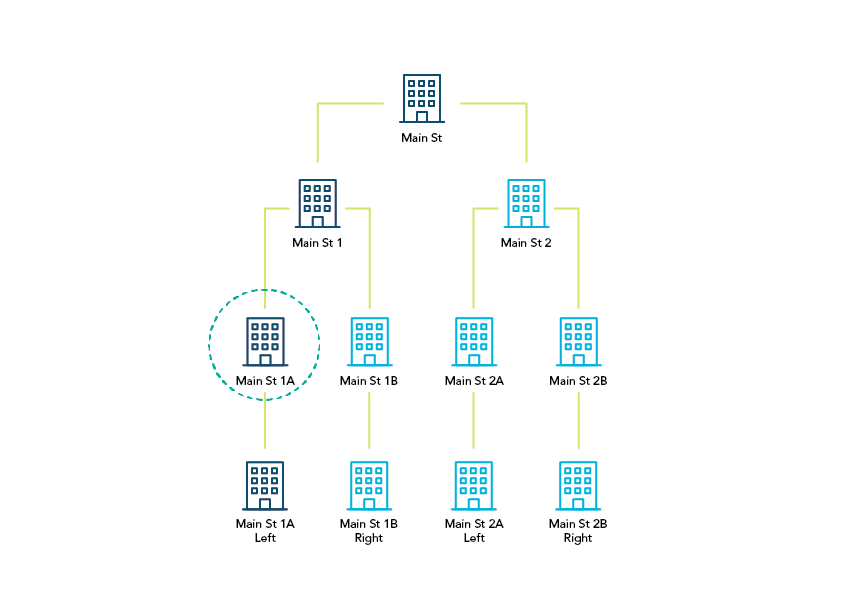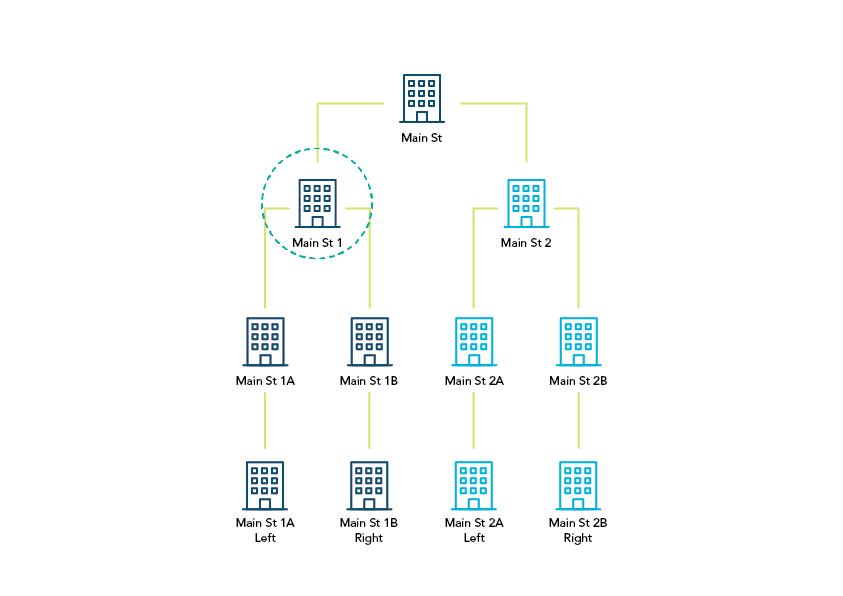Estates
This section provides an introduction to estates.
Large locking systems may contain several sub-estates with hundreds, even thousands of locks and keys; for example, a housing co-operative that rents its apartments may own apartments in many different buildings and locations. In cases like these, finding the desired information from a large number of rows in the user interface, and handling that data, may be difficult. Estates provide a way of organizing information into smaller entities that are easier to handle in the user interface.
Furthermore, estates provide the benefit that you can use access rights of the same name, and the same lock placement numbers, in different estates. If your locking system must cover, for example, two or more separate but similar buildings, use estates.
Estate-specific objects are:
- Locks
- Keys
- Access rights
- Floor plans
- Network modules
From the perspective of iLOQ 5 Series Manager, estates are filters that, when applied, only show locking data related to a particular estate.
In large locking system implementations, you may have dozens of buildings. In these cases, it is often a good idea to organise the estates as tree structures. When you select an estate on a particular level on a tree branch, you see:
- Objects on the selected estate
- Objects on the estates on lower levels on that branch
- Objects on the estates on higher levels on that branch
On the other hand, you cannot see:
- Objects on the estates on other branches
The figure below illustrates the estate tree visibility. In the first figure, Main St 1A is selected, in the second, Main St 1. The visible estate content are shown in blue in the figures. The invisible estate content are shown in grey in the figures.


You can restrict estate visibility by using zones. See Adding Zones to Estates.
You do not have to re-program anything, when you start using estates.